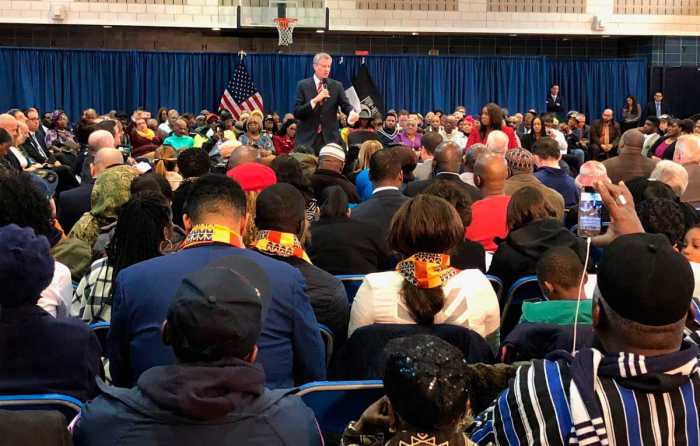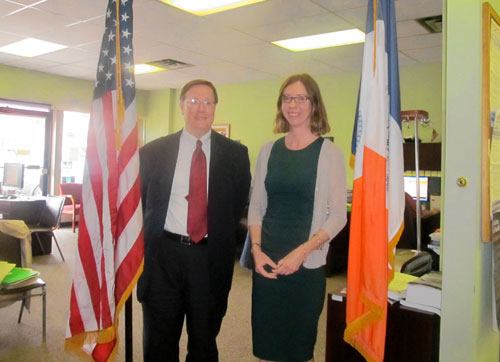By Mark Hallum
A day after City Council introduced legislation that would open up 75 miles of streets to bikes and pedestrians, Mayor Bill de Blasio has yet to commit to a plan to keep a reduced number of cars on the road permanently.
In a Thursday press conference, de Blasio told reporters in a Q&A that the current level of vehicles on city streets due to COVID-19 was an important lesson to that could be applied to the larger crisis that is climate change but does not have a plan to keep people out of their cars going forward.
The mayor was also confident that New Yorkers would not take this moment to choose cars over subways in the future and would eventually go back to their old, strap-hanging ways.
“In the short term, of course, everyone is going to be cautious to protect their own health and safety and their family’s health and safety, but New Yorkers are amazingly resilient. As we come out of this, I think the vast majority of us are going to resume the lives that we have had. So I don’t start with the assumption there is going to be a radical shift,” de Blasio said. “We have to build an entirely different reality going forward anyway, so we have to find more and more ways to attract people to mass transit.”
One of the growing contributing factors of health concerns on the subways and why some New Yorkers are choosing cars at this time is a perceived increase in a homeless presence on trains. New York City Transit President Sarah Feinberg said on Wednesday that she and her colleagues had grown frustrated with the city’s seeming lack of action in getting homeless folks out of the subways and into social services.
But de Blasio said that not only was the city Department of Social Services doing its job to convince homeless men and women to accept help and get off the subway, taking a more aggressive approach could be illegal and unpopular.
“This reality of homelessness in general, homelessness in the subways has been with us for decades. No, it’s not just something that got the attention of the NYPD in the last year. They’ve been working on it for years and years,” de Blasio said. “But it’s tough to – again, you can’t just take someone and arrest them because they’re homeless and that’s not what New Yorkers would want and it’s not legal.”
While de Blasio claimed the HOME-STAT program operated by the city Department of Homeless Services had managed to take thousands of people off the streets, a DHS spokesman told amNewYork Metro on Wednesday that during the pandemic only 13 homeless people had accepted help. This was a figure representing work done throughout the city, not only on subways.
This story first appeared on amNY.com























